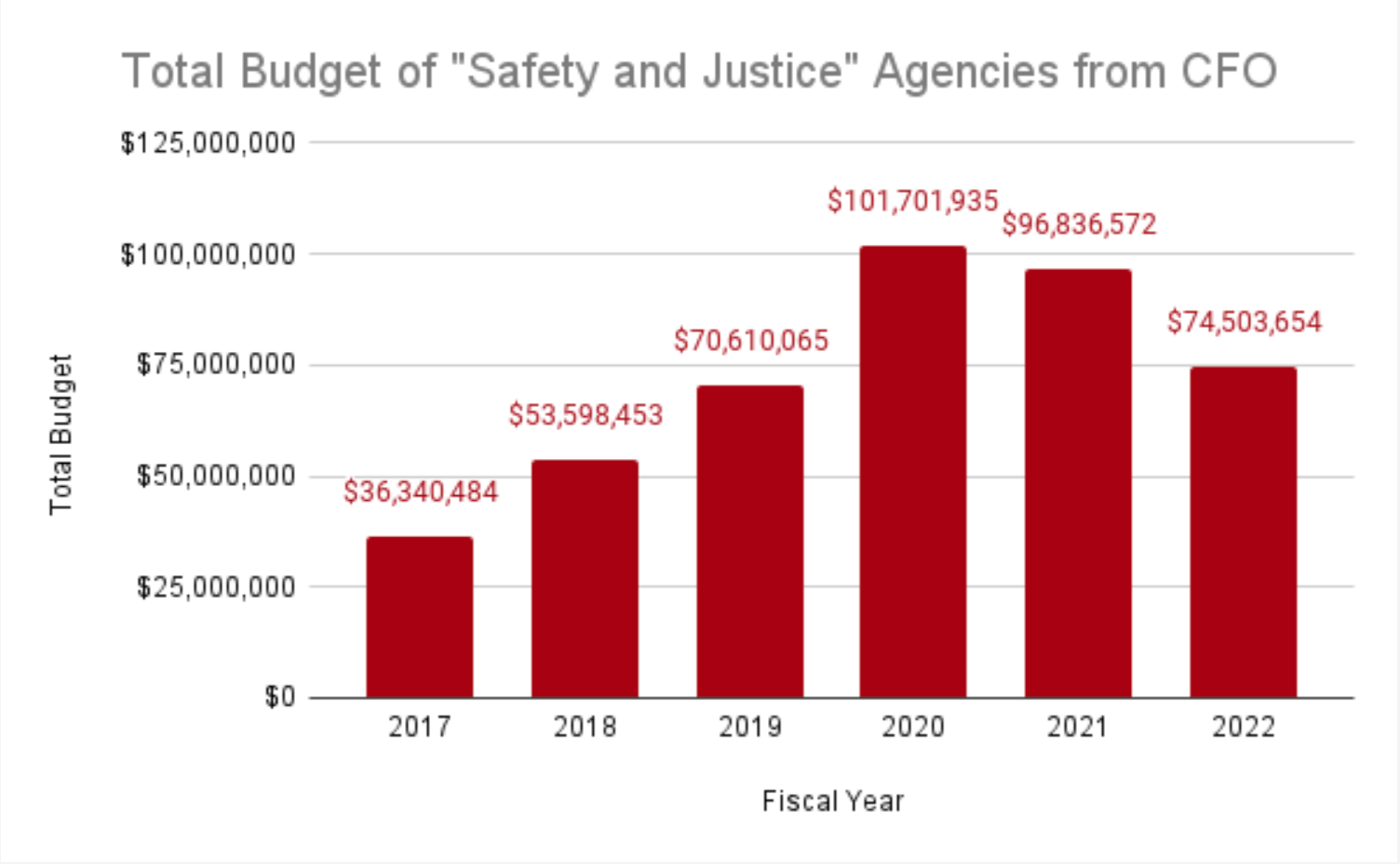Police Reforms: What went wrong? Part 3
Part 3: Body Worn Cameras and the Police Chief
Among the Emergency Amendment (covered more in part 2 of this article series) was also language on one particular reform that has often been talked about these past few years throughout the country: Body Worn Cameras (BWC’s). The act requires that police release BWC video within five business days at the request of the Chairperson of the Council or if it involves serious use of force and/or an officer-involved death. This should make it easier for BWC videos to be made public and hopefully also hold police accountable. The logic often applied to Body Worn Cameras when people call for this reform is that the threat of having misconduct recorded will prevent police from carrying out said misconduct. Unfortunately, this has not been the case. For years we have had videos of police brutality, yet the problem has not gotten better.
MPD has one of the largest BWC programs in the country, with over 3,200 cameras for their 3,800 members, yet they also know that the program alone does nothing. On their website, they highlight the randomized controlled trial with The Lab @ DC that they ran to find the effectiveness of BWCs. But they fail to show clearly what that study found, seemingly because they concluded that BWCs had no noticeable effect.
“Our experiment suggests that we should recalibrate our expectations of BWCs. Law enforcement agencies (particularly in contexts similar to Washington, DC) that are considering adopting BWCs should not expect dramatic reductions in use of force or complaints, or other large-scale shifts in police behavior, solely from the deployment of this technology.”
Quoted directly, from a study that MPD ran itself, where 6 out of 8 people running it worked directly for MPD. They also based their results on police officers’ reports of incidents written after the fact (under the assumption that they were telling the truth). Despite this, they had no choice but to report that BWCs are not enough to affect significant change. The BWC program at MPD has received nothing but more support and more funding. Instead of investing in programs proven to work like ONSE, they are throwing money at things that have proven to do nothing.
One more major change that happened last year was the appointment of a new chief of police, Robert Contee III. Some believe that Contee’s appointment will lead to the reforms that MPD needs. But is he committed to these changes? On the one hand, Contee talks about the need for change, on the other hand, he talks about how much great change has already happened within MPD over the past decade. Contee is also a big fan of a community policing model, which unfortunately means more police interactions in communities that are already over-policed. Both Contee and Mayor Bowser would like to expand the police force (even though, MPD is one of the biggest police departments in the country). One of his first measures as chief was to increase the police presence in “six historically crime-ridden neighborhoods” in an effort to deter crime. Although this is not something unique or new from Contee, it is not the policy change that many have been saying he represents.
All of these increases in policing are being justified by talking about high rates of crime. Contee claims that more officers are needed because there simply are not enough to effectively respond to all of the calls being made. Nationwide focus on gun violence and homicide is used to pressure people into giving police more power, even though evidence shows that police do not solve these problems. Nevertheless, the MPD budget has been steadily increasing. Many police supporters will point to the budget cut in 2020, from $591,313,726 to $559,526,918, as well as the supposedly rising crime rates. However, this one cut does not represent the overall trend in the rising MPD budget. The proposed 2021 operating budget of $578,069,493, is less than the budget in 2019, is still $8 million more than the budget in 2018 at $570,087,037. Looking at MPD’s crime data, we see that the overall crime rates in DC have been falling. The homicide rate this year is higher, going from 99 by July 14th in 2020, to 101 by the same date in 2021. But that represents only a 2% increase while the overall number of crimes, both violent and property, are down by 2%. All this is with the large budget cut. This is also after a huge decrease in crime from 2019 to 2020, where the total amount of crime decreased by 19%. Despite the trend of decreased crime each year, homicides have increased, from 116 in 2017 to 160 in 2018, and then from 166 in 2019 to 198 in 2020. Rhetoric that tries to tie a lack of funding to increased homicide rates is wrong – rates have been going up well before any cuts were made in MPD’s budget. Despite what Contee wants people to believe, more policing does not solve the issue of gun violence and homicide.
While the reforms in both the NEAR Act and the Comprehensive Policing and Justice Reform Emergency Amendment Act are steps in the right direction. These have been undermined through a lack of funding or police just ignoring them. What we ultimately need is to decenter the police. The recommendations made by the Police Reform Commission speak about centering communities rather than the police to prevent crimes from happening in the first place. The first step towards a safer DC is to push back on Contee’s calls for an increased police force by making sure that the Council follows the recommendations made by the PRC. If we have learned anything from 2020, it is that public pressure campaigns do work. We need to hold the DC Council and Mayor Bowser accountable because it is not the police who will keep us safe. We keep us safe.


